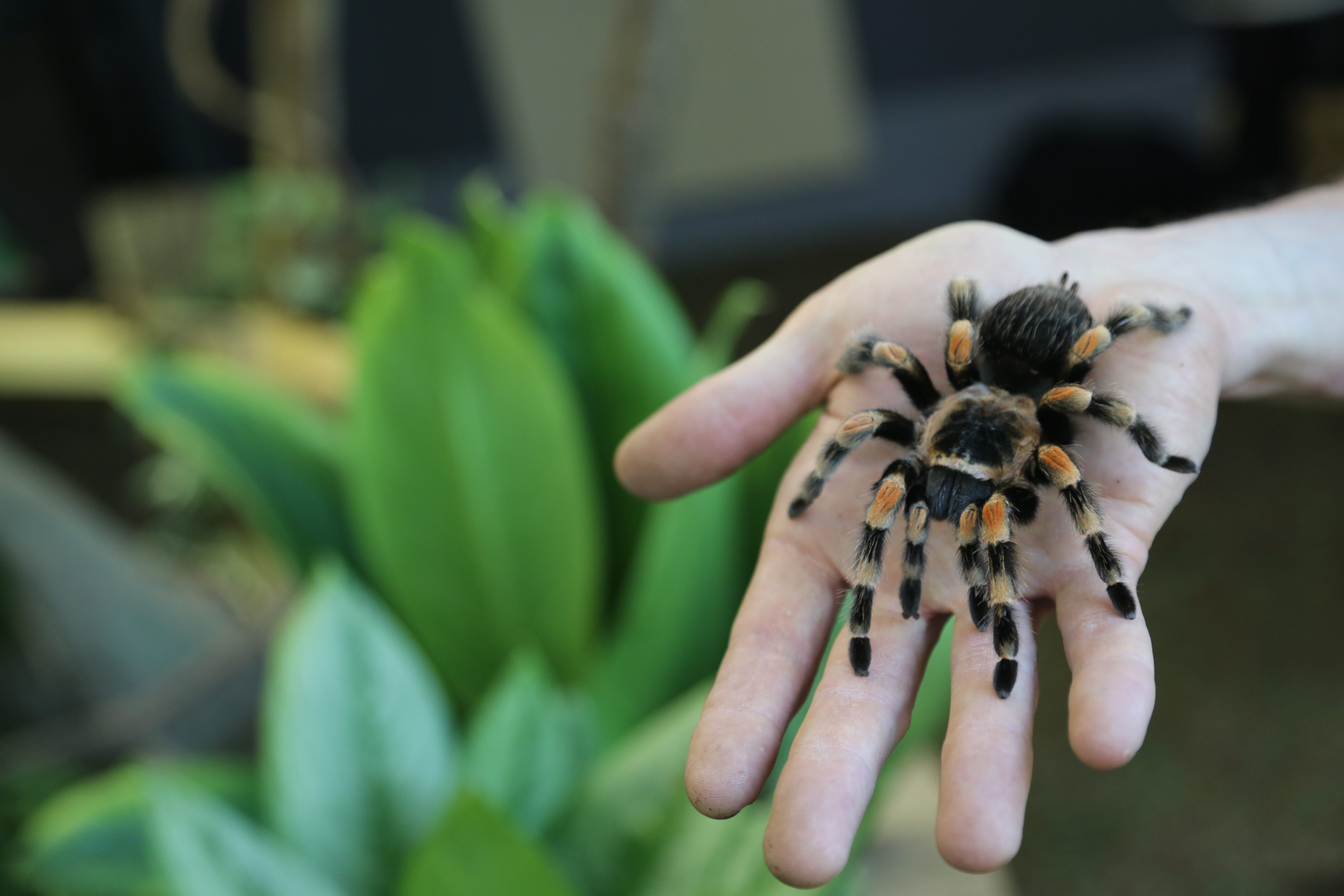Overcome Your Arachnophobia By Cuddling a Spider at the London Zoo

(Photo: tmorkemo/Flickr)
Every autumn, the turning of the leaves heralds the emergence of the spiders. This is the time of year when arachnids, like many humans, wander in search of warmth and companionship.
This year, however, things are particularly spidery in the United Kingdom, where a wet summer has resulted in an increase in eight-legged guests in people’s homes. And it’s not just houses that are receiving visits—in early November, two London schools were closed for a week following the discovery of false widow spiders creeping around the classrooms.
None of this is good news for the UK’s arachnophobics, which number around a million, according to London Zoo’s Head of Invertebrate Conservation Dave Clarke. But there is a way for those who are petrified of spiders to overcome their fears: the Zoological Society of London’s Friendly Spider Programme.
The four-hour program, run by Clarke and hypnotist John Clifford, has been operating for the last 20 years. Over an afternoon, up to 40 participants engage in discussions on arachnids and phobias before being guided through a group hypnosis. During the day, they are encouraged to find a “spider buddy”: a fellow arachnophobic with whom they can swap stories and talk through their fears. This helps them feel supported during the afternoon’s many physical and psychological challenges, and normalizes feelings of dread. Following a tea break, they face the ultimate challenge: a look-and-touch encounter with real, live spiders—including a big, furry Mexican red-kneed spider—at the London Zoo.
Though the Friendly Spider Programme can benefit anyone who has a distaste for arachnids, it is designed for those whose fear of spiders is having a significant negative impact on their life. Clarke cites examples of people who have bought a home, discovered a spider there, then had to sell the property. Others come to the course having crashed their car after seeing a spider in it while driving.
“We have people who come on our course who don’t like the word spider, or anything associated with spiders,” says Clarke. For some of these participants, feelings of fear or revulsion can come from spiderwebs or even the spider-like vine atop a tomato. A peek at a photo of a spider, such as the one below, can induce a fight-or-flight response.

Agatha, a Mexican red-kneed spider. (Photo: Zoological Society of London)
But Clarke rejects the idea that arachnophobia is based on an inherent human fear. “That’s rubbish,” he says. “People put all their negative assumptions on spiders,” regarding them as dangerous even though, in the UK, no species is capable of killing a human. Arachnophobics often develop their fear during childhood, after observing spider aversion in someone close to them—like a parent, sibling or school friend.
Clarke says even he had a fear of spiders at one stage, but his desire to become a zookeeper forced him to confront the issue. He chose the “flooding” method—a type of exposure therapy in which he forced himself to hold spiders despite wanting to do the exact opposite.
Though Clarke acknowledges the Friendly Spider Programme can’t cure every arachnophobic, he says that 97 percent of course participants choose to hold a spider in their hand at the end of the day. “Very occasionally, people lapse after coming on the course,” he says, “but it’s such a tiny proportion. We do follow up with those people as much as we can and can often still get them back to being able to deal with spiders.”
The main shift that takes place during the afternoon is in people’s perceptions of arachnids, which Clarke and hypnotist Clifford address by comparing them to other dangerous animals and highlighting spiders’ positive contributions to the ecosystem—such as their control of flies and mosquitoes.
“Spiders are quite cuddly, too, once you get to know them,” say Clarke. “We should be shouting from the rooftops how fantastic it is to have spiders around.”















Follow us on Twitter to get the latest on the world's hidden wonders.
Like us on Facebook to get the latest on the world's hidden wonders.
Follow us on Twitter Like us on Facebook